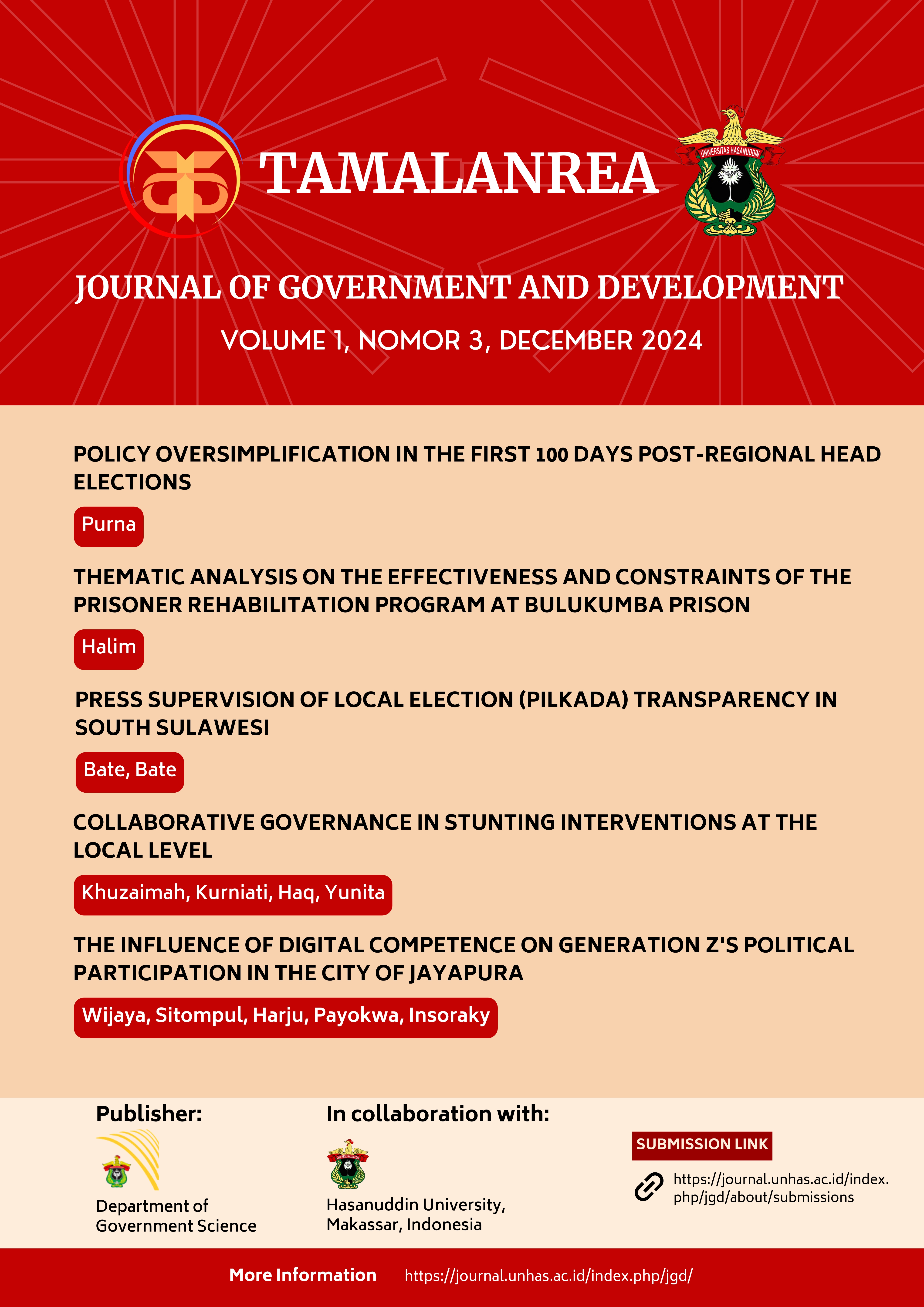Thematic analysis on the effectiveness and constraints of the prisoner rehabilitation program at Bulukumba Prison
DOI:
https://doi.org/10.69816/jgd.v1i3.42345Keywords:
Community Empowerment, Organizational Management, Collaborative Governance, Thematic Analysis, Rehabilitation, PrisonAbstract
Bulukumba Penitentiary (LAPAS) faces significant challenges in prisoner development, such as limited human resources, budget, and facilities, as well as social stigma that hinders prisoner reintegration into society. This study aims to analyze the effectiveness of the prisoner development program, identify key obstacles, and provide strategic recommendations. The study used a descriptive qualitative method with a case study approach, involving 15 purposively selected informants. Data were collected through in-depth interviews, direct observation, and document analysis, and analyzed using the Miles and Huberman model. The findings indicate that the development program has provided significant benefits in improving prisoner work skills, spirituality, and morals. However, limited resources and dependence on external parties are the main obstacles that affect the sustainability of the program. In conclusion, strengthening the internal capacity of prison officers, increasing budget allocation, and more strategic collaboration with external parties are important steps to ensure the effectiveness and sustainability of prisoner development
Downloads
Published
How to Cite
Issue
Section
License
Copyright (c) 2024 Author

This work is licensed under a Creative Commons Attribution-NonCommercial-NoDerivatives 4.0 International License.















